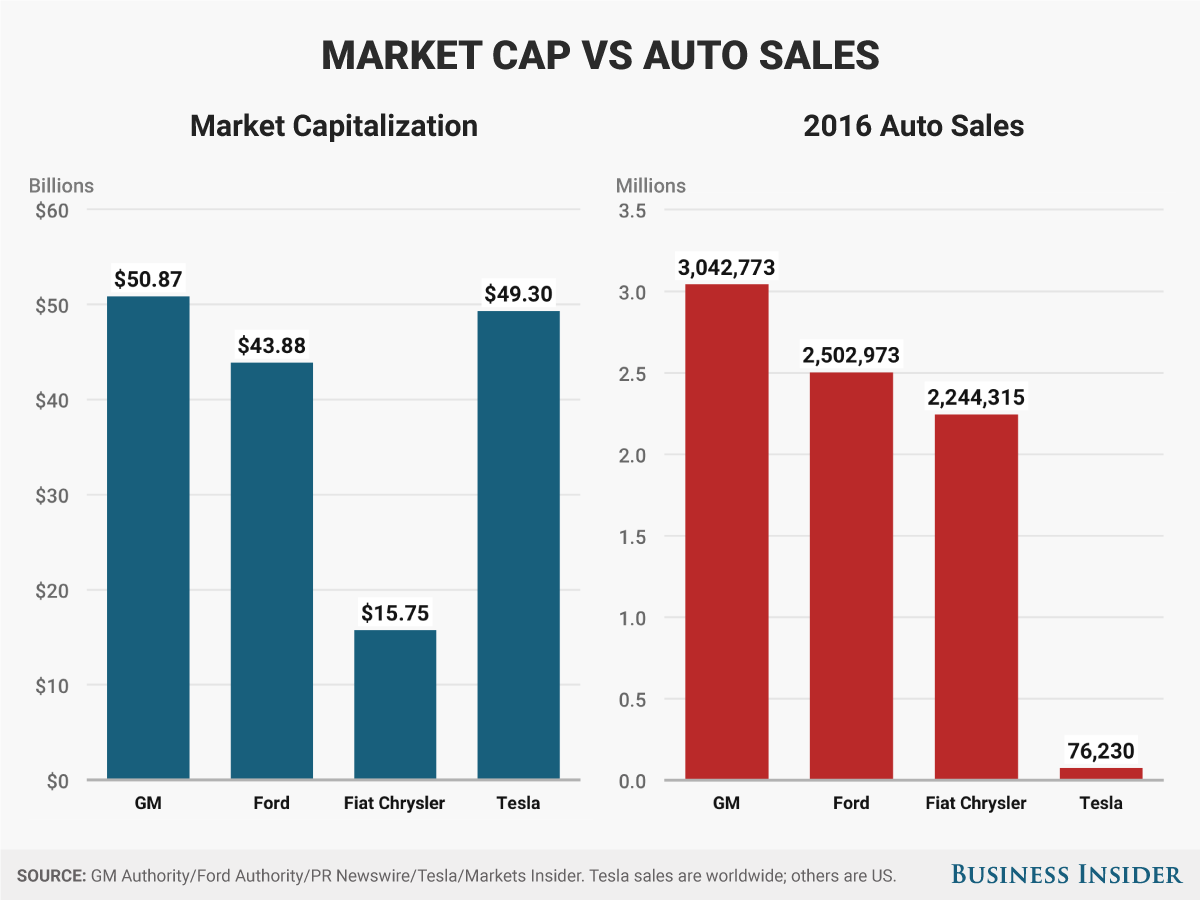For the better part of a century, there have been three major US carmakers: General Motors, Ford, and Chrysler (now Fiat Chrysler Automobiles).
Over the past few month, a new contender has crashed the party: Tesla. After briefly seeing its market cap rise above GM, Tesla has slipped back. But with a total value of $48 billion, versus $51 billion for GM, Tesla is still considered by Wall Street the number two US automaker – Ford is at $44 billion. Shares closed on Friday at $306.
At the recent New York Auto Show, we heard from plenty of executives that what Tesla has done is impressive and that CEO Elon Musk deserves a lot of credit for creating the car company of the future. When it comes to the whole massive-market-cap-thing, however, we have been reminded that Tesla sells a remarkably small number of vehicles, relative to the traditional US Big Three: GM, Ford, and Fiat Chrysler Automobiles.
This chart captures the disparity:
On the left, we have current market caps. On the right, we have 2016 sales - US sales for the Big Three, worldwide sales for Tesla.
Tesla's goal, for the record, isn't to match any of the Big Three's annual sales anytime soon. By 2018, Musk predicts 500,000 in yearly deliveries, and by 2020, a million.
Tesla's sales, meager as they may look when compared to the Big Three, aren't that bad; the company is selling only two vehicles, the Model S sedan and the Model X SUV. Later this year, its will launch the Model 3 mass-market vehicle, and for that car there could be as many as 500,000 pre-orders.
GM, Ford, and FCA, by contrast, have captured their respective chunks of sales with a wide variety of vehicles, everything from small four-doors to hulking pickups, with Corvettes and Mustangs and muscle cars in the mix.
That said, a market cap at Tesla's level signals an immense level of investor confidence in Tesla's future execution. GM controls about 18% of the US market alone - and could make something like $10 billion this year. Tesla has less than 0.5% of the markets and has rarely posted a profitable quarter.
The bottom line is that you need to be a little bit crazy to accept Tesla's current market cap. But then again, if you'd suggested at the time of Tesla 2010 IPO, when the stock was at $20, that shares would climb above $300, you might have been labeled worse than crazy.
But Tesla is making history - there's no debate about that.
